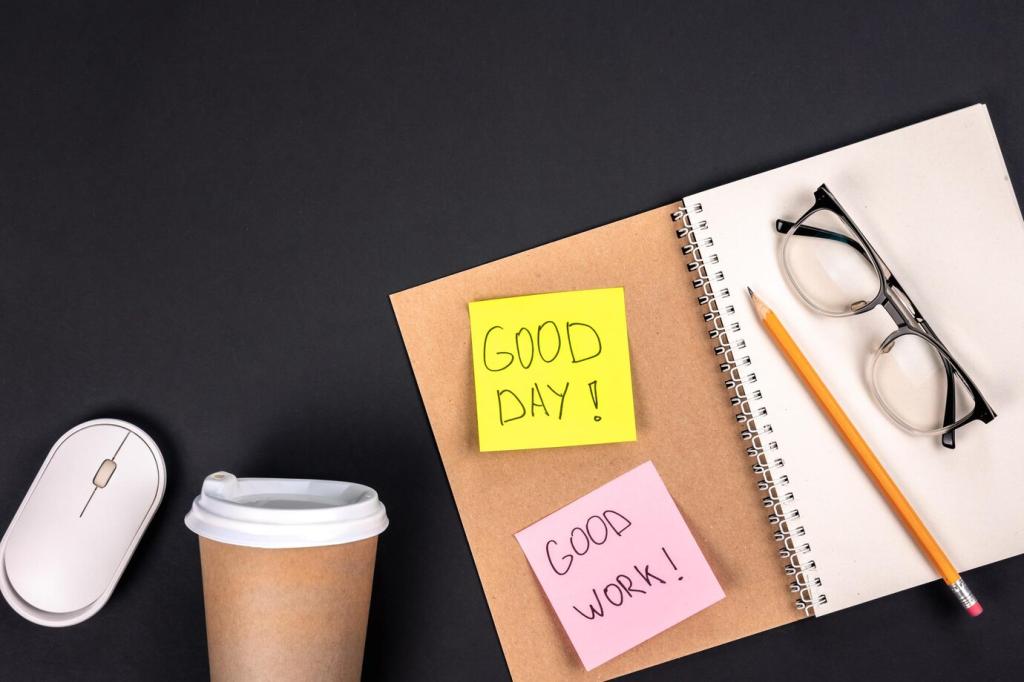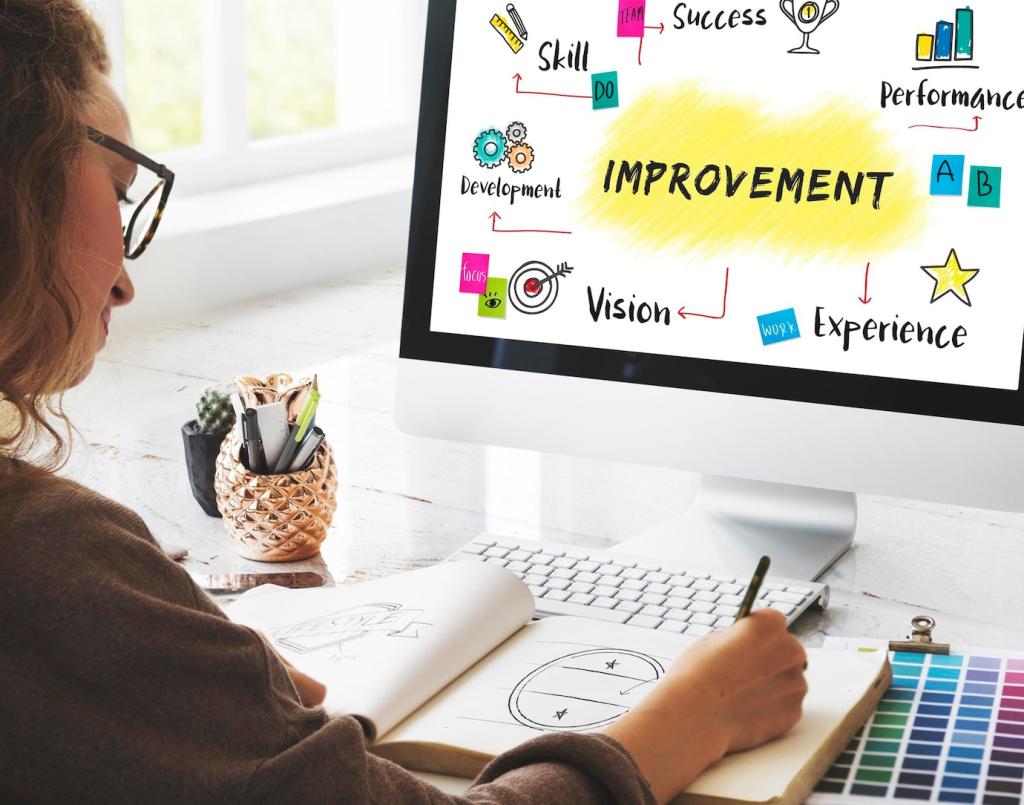Measure What Matters: Comfort, Output, and Attention
Each afternoon, rate neck, shoulders, and lower back on a simple one-to-five scale, noting seated versus standing time. In two weeks, patterns appear, guiding small height tweaks that pay off as steadier focus and calmer evenings.
Measure What Matters: Comfort, Output, and Attention
Watch for tab-hopping, rereading, or delayed starts. If these spike after long sitting stretches, schedule a stand phase before deep work blocks. Share your findings with us, and subscribe for templates that keep tracking quick and painless.
Measure What Matters: Comfort, Output, and Attention
Review your log, adjust monitor height by a centimeter, nudge keyboard angle, and refine your cycle ratio. Celebrate one clear improvement, and post your lesson so others can borrow it and build their own sustainable workflow upgrades.




